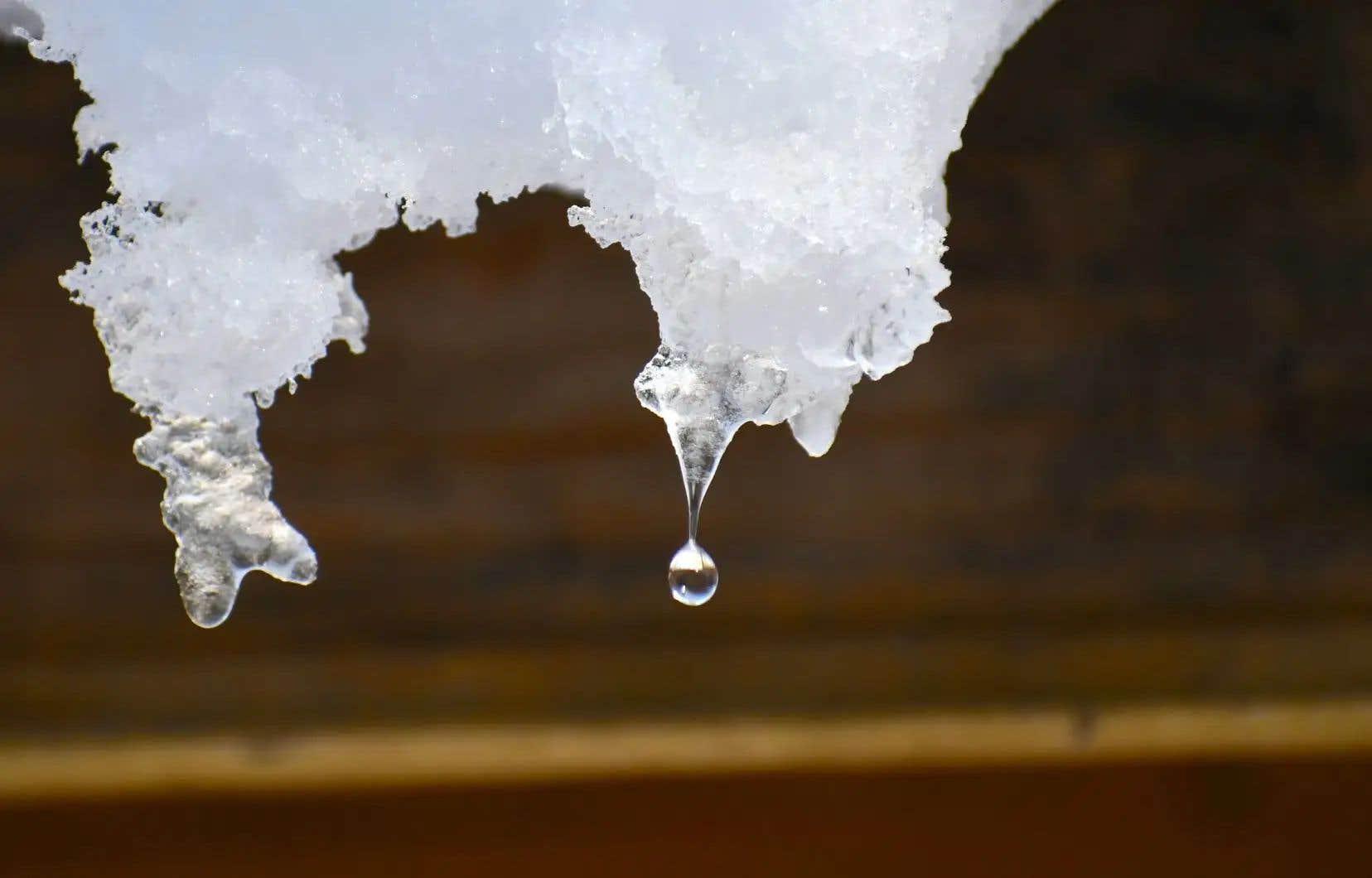This text is taken from Courrier de la planete. Click here to subscribe.
Will this year’s spring break go down in history as the hottest? Should we forget the snow for this week off from school? If the trend continues, several regions will be exposed next week and temperatures will break new records.
After the year 2023, which was the hottest on record, then a month of January warmer than ever, the start of March promises to be particularly spring-like. Families usually look for snow during the school break, but many will have to fall back on other activities.
In the coming days, “a vast low pressure system will rise from the southwest of the United States and will pump hot air over the province,” explains Michèle Fleury, meteorologist with Environment and Climate Change Canada (ECCC).
Tuesday and Wednesday, temperatures will be between 13 and 15 degrees Celsius above the average maximum temperature in Montreal, but also in locations further north, such as Mont-Tremblant, Shawinigan or Saguenay. “We expect to break temperature records for several localities, especially on Wednesday,” confirms Ms. Fleury.
The old record of 8.3°C for February 28 or 29 dates from 1954 and will almost certainly be surpassed. A vigorous cold front will then cause a significant drop in temperatures, with a difference of 30 degrees in just 24 hours, reports the meteorologist. She warns that this sudden freeze could cause “freezing where snow remains” and that “water on roads could turn into patches of ice.”
The rain over the next few days risks completely eliminating the white coat… where there was still snow. In Montreal, in Montérégie, in Centre-du-Québec and in the west of Estrie, readings from the measuring stations already indicate that there are only a few traces of snow remaining. With the system which will pass over all of Quebec this week, “we can talk about rapid melting,” warns Ms. Fleury.
Forecasts beyond three days are long-term, she says, so they could change next week. The temperatures will most likely be “mild”, she says all the same.
If the forecasts prove true, temperatures will also be around 4 to 10 degrees above the maximum averages, according to a calculation made from the federal ministry’s website for the week of March 3 to 9. The records for these dates oscillate between 10 and 14°C in Montreal; they could therefore be smashed during the break.
Climate predictions
“Our winters are warming quite significantly, it’s already a reality,” notes Christopher McCray, climatologist at the Ouranos research consortium. There are therefore already more days above zero during this period, and their number will increase in the coming years, he warns.
As for the quantity of snow that falls, “the climate models are quite clear”, says the scientist: it will decrease in the future and, on average, we risk receiving less and less.
Snow cover will vary from year to year, obviously. What we will “mostly lose” are small snowfalls of a few centimeters, for example: “In southern Quebec, our winters are characterized by these small quantities which fall every week,” recalls Mr. McCray.
However, we will continue to experience intense snowstorms which bring big gusts of 20 to 30 cm, says the researcher. He has also published a study on this subject, which we have already told you about in the Courrier de la planete. The heaviest snowfalls tend to occur when the mercury is just below freezing, so these auspicious days will continue to exist in our already changing climate.
Humidity in the air will increase with global warming, explains the climatologist, so precipitation is likely to be as intense, if not more. Be careful, the total amounts of precipitation in winter will increase, according to predictions, but it will be more in the form of rain.
Is the break with skis in fresh powder snow something to be forgotten? “The more GHGs we emit through our activities, the warmer it will be in winter,” says Mr. McCray.
Activities
Cross-country skiing is already compromised, since it is practiced most of the time on natural snow. “But if there is less snow on the ground, we can always replace cross-country skiing and snowshoeing with hiking in boots or crampons,” says Simon Boivin, public relations officer for SEPAQ. The parks in this network of course remain open and are not experiencing any “particular movement” in terms of cancellations.
Tracks remain open on hundreds of kilometers of the network. Artificial snowmaking is not currently planned there. “The use of snow cannons requires significant use of energy and water,” explains Mr. Boivin. However, work to improve soil drainage and thus maintain more snow cover is already taking place, particularly in the Mont-Saint-Bruno and Mont-Orford national parks.
As for the mountains, the Association of Quebec Ski Resorts assures that they are “well equipped to cope with ups and down weather, with episodes of mild spells and rain”. Many people “love” the type of spring conditions, says Sophie Leblanc-Leroux, communications coordinator for this association.
If large amounts of rain fall, many resorts close for the day, but only temporarily, to keep the snow cover intact, “while waiting for the rain to drip through the snow,” she says. .
Don’t try to go skating in town to console yourself. In Montreal, all ice rinks that are not refrigerated are already closed. In Ottawa, the iconic Rideau Canal was opened briefly twice this winter, including once when walking was recommended over skating.
